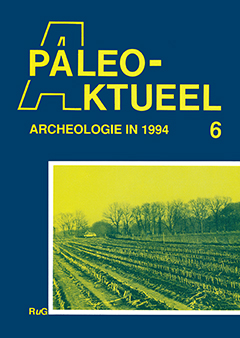HET OPPERVLAKTEMONSTER: DE RELATIE TUSSEN STUIFMEELREGEN EN VEGETATIE
Samenvatting
Analysis of modern pollen precipitation is mostly done from samples collected in moss. Moss polsters are thought to preserve pollen for a fairly long period. Thus accidental peak representation of certain species is avoided. In the absence of mosses, the upper half and one and a half centimetres of the soil in a dandelion meadow on the Es fields of Yde (province of Drenthe) and a mass polster that developed after 1970 in a newly constructed ditch have been analysed for their pollen content. The pollen spectra represent a vegetation that must have grown there at least one century ago: Plaggenwirtschaft conditions with buckwheat, cornflower, rye and heather pollen are dominant. A comparable picture is obtained from the twentyone-year-old pollen precipitation in a farmyard at 1 km from the first samples. The samples inform us about a past vegetation rather than about the present pollen rain. A reason may be the acid condition of the soils in such farming areas, which was caused either by the application of heather sods in the manuring system or, in the case of the farmyard, by the presence of a heather podzol, indicating former heath. The transportation of pollen of such past vegetations into modern samples was prabably done by splash water.

